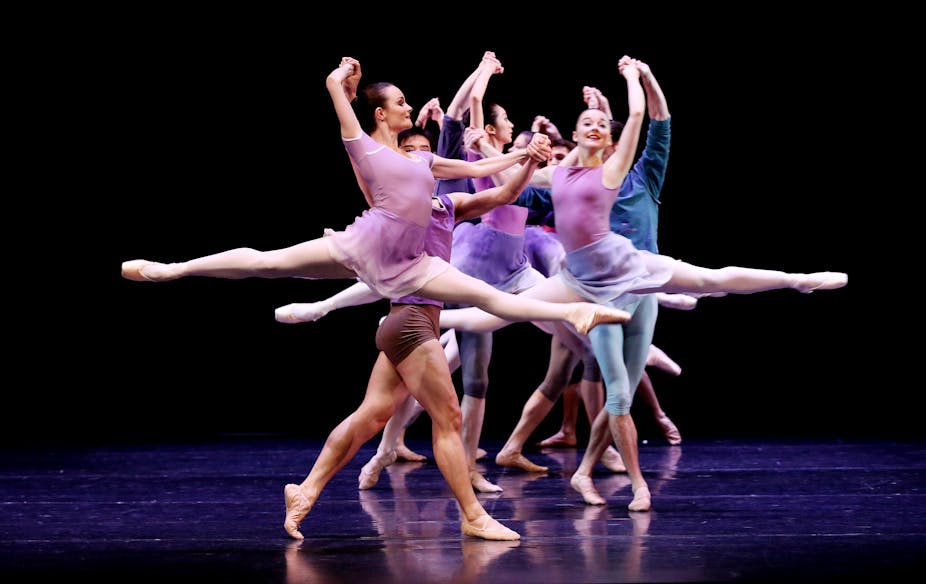An episode of the ABC TV comedy series Upper Middle Bogan, recently re-aired, explores the perceived class divide between high and low art forms. Edwina Bright, the daughter of a well-to-do family, who nevertheless find themselves related to V8-driving bogans, plays the bassoon at an elite private school concert. The joke? Instead of delivering a Bach chorale (the music of choice for her “posh” grandmother), she ends up performing The Angels’ classic Aussie pub anthem Am I Ever Going to See Your Face Again?
It is, or at least should be, awkward viewing for anyone in the arts as it depicts what seems to be a commonly held view of the role of culture as reflecting, rather than challenging, existing social and class distinctions. We are therefore uncomfortable with the idea that culture can also be aspirational, a means by which we can explore what kind of person we might be, as much as who we think we are.
The particular nexus between classical music and private school education is, instead, trumpeted as a point of difference by elite private school brochures, and by the fact that many such schools now boast concert halls and other facilities that are far better than what is generally available to the broader community (and certainly to universities!). No wonder people come to think involvement in classical music education boils down to an act of class differentiation.
This context also helps us understand why the federal government’s decision, amid general budget austerity, to provide A$1 million towards the purchase of a mansion in Melbourne’s wealthy inner north for use by the Australian Ballet School, was not universally welcomed.
That, and the fact that Daniele Kemp, the wife of the former Arts Minister under the Howard Government (and now chairman of the free market lobby group the Institute of Public Affairs) Rod Kemp, now sits on the board of the Australian Ballet School, has made this rare instance of budgetary largess a rather easy target for criticism by the arts commentariat, both in print and on social media.
By tacitly reinforcing, rather than challenging, the association between “elite” art forms and class privilege, however, such criticism is not without its dangers. As Jason Wilson’s excellent newspaper column for The Guardian on the perceived influence of the Institute of Public Affairs in Australian public life notes, such a concession risks a critical cop out. If we are to believe that access to, and investment in, the arts is just class war by proxy, then there is, frankly, little that can be said in favour of public arts funding generally.
Arguably the opposite is the case. An investment in culture can actually help improve our capacity to think outside the realm of social and political clichés. Palestinian American literary critic Edward Said has, for instance, observed that we tend to think that:
if you’re a white man you can say you have Beethoven, and the black man’s not supposed to listen to Beethoven, he’s supposed to listen to Calypso […]
He described this, however, as “a trap”, because such cultural objects should be understood as “part of the possession of all … humankind”, a reminder – if you like – that we are ultimately inescapably connected to each other.
It is a trap some critics of the government’s grant to the Australian Ballet School have fallen rather too easily into. Restricting the legitimacy of cultural forms to one particular ethnic group or economic strata of society can become a subtle way we also restrict our political imagination, our sense of commonality, and our desire to challenge the status quo.
Here I agree with British philosopher Andrew Bowie, who argued in an essay for the New Left Review:
Anyone who has been involved in the attempt, say, to persuade students who reject it or ignore the value of great music or other art soon realises that most of the rejection comes about because the language that would allow them access to it was never taught to them. Instead, such art is often incorporated into an image of class society, where it is basically for “them”, and not “for the likes of us”.
The fact that it is possible to overcome this resistance is not a direct route to political change, but it can and does open up whole new worlds to many people: if that is not political, I do not know what is.
Let’s not, then, begin any discussion about the appropriateness or otherwise of government largess towards so-called “elite” culture with the premise (hidden or otherwise) that such culture is really only by and for the economic elite.
The case we should instead be pressing is that great art in all its forms is properly to be understood, like other aspects of a mature egalitarian society, to be speaking for, or indeed challenging, all of us.

